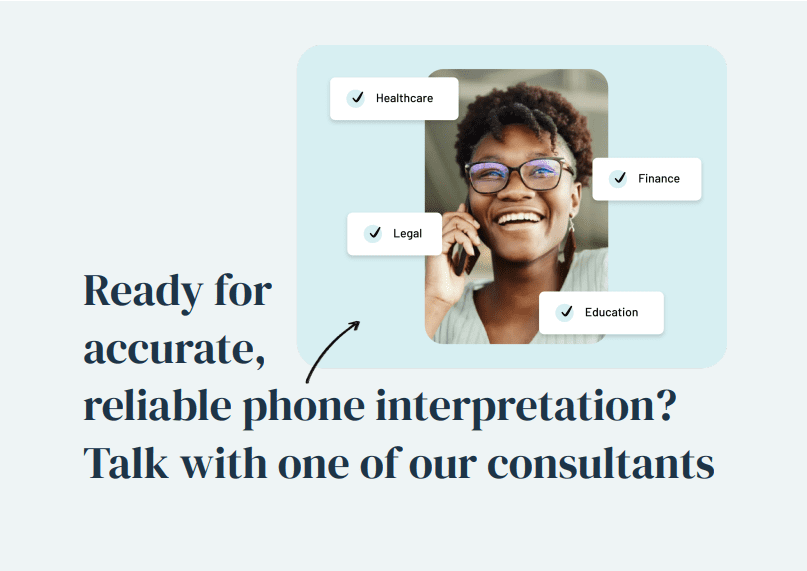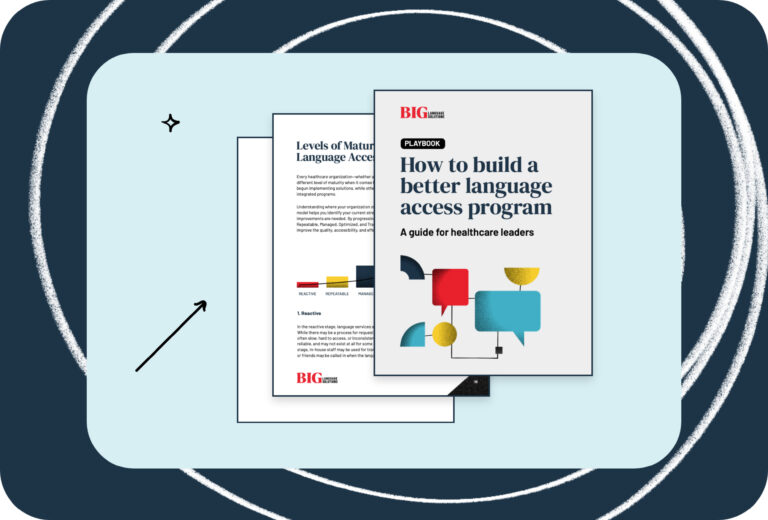If you are a payor, provider, or insurer in the Medicare Advantage network, you’re already under significant pressure to provide preferred language materials for your community members with Limited English Proficiency (LEP).
Recent regulatory updates have intensified this pressure.
As you may know, the Centers for Medicare & Medicaid Services (CMS) unveiled the 2024 Medicare Advantage (MA) and Part D final rule, which aims to increase the quality and availability of care for MA recipients up to the standards of traditional Medicare.
The ruling increases accountability for healthcare providers, includes guidelines for streamlining processes, and reinforces penalties for non-compliance. Several provisions in the new rule involve expanding the availability of translation and interpretation services to benefit the Limited English Proficiency (LEP) population.
Here’s an example of the issues the ruling is trying to solve: CMS surveys have found that Individualized Care Plans (ICPs) aren’t consistently translated into the enrollee’s preferred language, even when the enrollee has indicated their need for translation. The new rule addresses this by requiring providers to always send all healthcare communication in the
preferred language after the initial request, so enrollees can better understand their benefits and more effectively achieve their health goals.
Compliance with the new CMS final rule is non-negotiable, and penalties for non-compliance will start in 2024. On the plus side, the positive impacts of investing in high-quality language services provide powerful benefits for both your organization and the members you serve.
Let’s take a closer look at the new requirements, their benefits, and some strategies to make
sure your organization is prepared to meet them.
What CMS Final Rule Means for the Language Services You Provide
There are three components of the new rule that will significantly impact how you provide language services:
Health Equity: Language barriers are one cause of health disparities in marginalized communities. By expanding the availability of language services, health equity is improved. The new ruling increases funding for health initiatives that address disparities in healthcare access, quality, and outcomes among different populations enrolled in Medicare Advantage and Part D plans.
Star Ratings Adjustments: The Star Ratings system now evaluates MA and Part D plans based on quality and performance, including how well they serve non-English speakers. Plans that offer a positive experience to limited English proficiency (LEP) individuals are likely to see higher ratings, helping them retain and attract more members.
Marketing and Communications: Stricter regulations are in place to ensure marketing and communications from MA and Part D plans are clear and accurate. This means plans must provide LEP patients with marketing materials in their preferred language to meet these new standards.
Let’s take a deeper look at why all of this makes a huge positive difference in our communities.
The Significance of Translation & Interpretation in Improving Outcomes and Achieving Health Equity
When patients don’t speak English, there is a formidable obstacle to getting quality healthcare, affecting patient outcomes and satisfaction. The new ruling requires healthcare organizations to make sure that all patients, regardless of their preferred language, can access services easily and effectively.
Tackling language barriers is a critical step in this journey, since understanding healthcare materials directly influences the LEP population’s ability to:
Gain adequate coverage: Providing insurance materials in multiple languages empowers LEP individuals to make informed decisions about their healthcare options, leading to greater coverage and fewer gaps in care. Insurance policies are very complex in the United States, and it is in everyone’s best interests if every detail is clearly understood.
Understand benefits and coverage: Imagine receiving a large bill and a corresponding Explanation of Benefits (EOB) that you don’t understand. If a community member receives this information in their own language, they have a much better chance of navigating their policy and managing their bills (even handling errors) than otherwise.
Access the care they need: 48% of adults with LEP have experienced a language barrier in a healthcare setting within the last three years. Common experiences like filling out complicated paperwork, scheduling appointments or explaining problems to a provider are all much more dicult in a language you struggle with. Translation and interpretation services help LEP patients navigate the healthcare system more effectively and receive timely and appropriate care without the confusion these barriers can cause. Members that don’t speak English deserve the same level of care as those who speak English.
Manage their health for better outcomes: When patients fully understand their treatment plans
—whether it’s medicine dosages or physical therapy instructions—they are more likely to follow
through, improving their health outcomes. This leads to fewer medical complications and
reduces the need for expensive emergency interventions. Clear communication in a patient’s
preferred language can make all the difference.

Manage their health for better outcomes: When patients fully understand their treatment plans —whether it’s medicine dosages or physical therapy instructions—they are more likely to follow through, improving their health outcomes. This leads to fewer medical complications and reduces the need for expensive emergency interventions. Clear communication in a patient’s preferred language can make all the difference.






